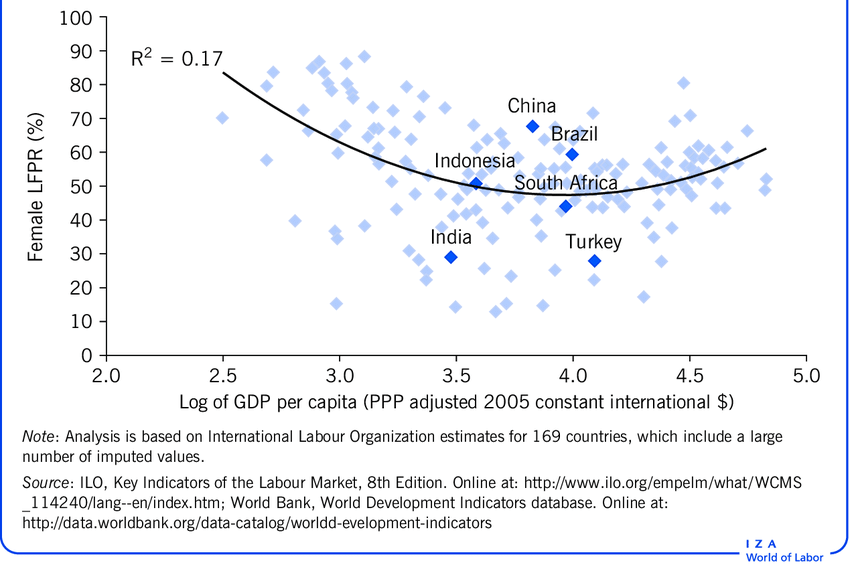What is the issue?
- The female labour force participation rate (FLFPR) has dropped from around 31% in 2011-12 to around 23% in 2017-18.
- It is imperative to understand the varied reasons behind the decline despite the numerous government measures in place.
What is the anomaly?
- The decline is explained to be a result of a fall in overall labour force participation rates (LFPR) in India.
- This, in turn, is said to be a result of demonetisation when economic activity across the country collapsed.
- But markedly, FLFPR fell from nearly 42% in 2004-05 to around 31% in 2011-12, well before demonetisation itself.
- India’s FLFPR is notably the lowest among the emerging economies.
Are government measures paying results?
- The decline in FLFPR is despite the strong government initiatives for “specifically targeted programmes” for women’s socio-economic empowerment as provided in the “Gender Budgeting” Statements.
- These include Support to Training and Employment Programme for Women (STEP) of 1986 and “Beti Bachao, Beti Padhao” scheme of 2015.
- But the insufficiency of budgetary allocations for such crucial schemes remains a concern and the outcome is less appreciable.
- There is a notable deviation between what is budgeted for these programmes and the real spending.
- Moreover, India designed a rights-based job guarantee programme for 100 days - the Mahatma Gandhi National Rural Employment Guarantee Act (MGNREGA).
- But ensuring job cards to women have not effectively translated into rise in employment.
What are the reasons?
- Care Economy - The “care economy” burden of women is one of the important determinants of FLFPR.
- It refers to women spending time on fetching of clean water, fuel collection, and other domestic chores.
- Their “time poverty” affects “income poverty”, as the time burden of women in domestic chores hinder them from entering the workforce.
- Due to this, there are specific labour supply constraints in India, over and above the known labour demand constraints (lack of jobs) for women.
- Fem-U - From an economic growth perspective, a more logical answer for the falling participation is what is called the “Feminisation U” (Fem-U).
- This refers to an ILO (International Labour Organization) study which found evidence of a U-shaped relationship between FLFPR and GDP per capita.
- It proposes that growth lowers female participation rates in the early stages of development and increases it at later stages.
- This may actually apply in a broad sense to India.
- However, Fem-U is an experimental question, which needs further research in India.

What lies ahead for India?
- India is likely to benefit from moving up the second phase of the Fem-U, depending on progress in income levels across the country.
- According to the ILO, reducing the gender gap in South Asia alone by 2025 can lead to a 7.2% increase in GDP for the region.
- So investing in comprehensive “care economy” public infrastructure is crucial for India to increase economic growth by way of increase in FLFPR.
- In all, it is high time the macroeconomic policymakers realise the significance of integrating gender perspective in job creation.
Source: Financial Express

